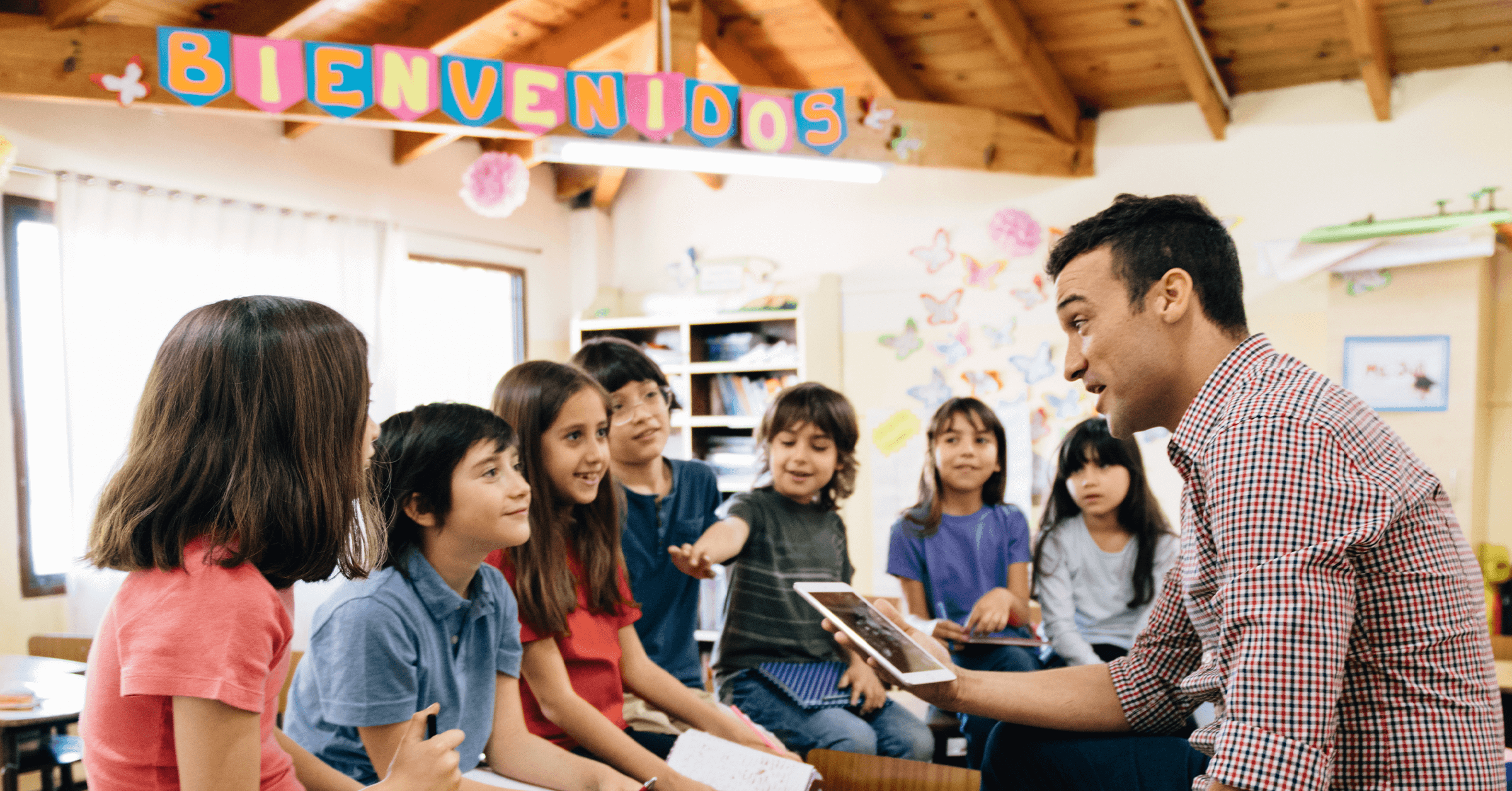Second Step® Insights
Language Matters: Making Human Skills Instruction Accessible
September 24, 2025 | By: The Second Step® Team

In schools across the country, students are asked to solve math equations, analyze texts, and memorize facts. But just as essential are the human skills they practice every day, like the ability to manage emotions, resolve conflicts, work as a team, and show empathy. These are the skills that shape relationships, fuel learning, and prepare young people for life beyond the classroom.
For decades, educators have recognized that students thrive when social skills and emotional growth are nurtured alongside academics. These skills help create a foundation for resilience, belonging, and confidence, qualities every child needs, no matter their background or language.
That’s why we continue to offer some of our most popular Second Step® programs in Spanish as well as English. We also provide family communications in 11 other languages in select programs. Language access isn’t just about understanding lessons. It’s about helping students feel a sense of belonging in their classrooms and making sure families can take part in their child’s growth.
Why language access matters
More than 5 million US public school students—about one in ten—are English learners, according to the National Center for Education Statistics. Nearly 77% of them speak Spanish at home, making Spanish the most common home language for English learners by far. For these students, navigating academics in English is already a challenge. Learning self-management, communication, and empathy should not be an added barrier.
When human skills instruction is available in a student’s primary language, it does more than improve comprehension. It validates their identity, strengthens their connection to school, and ensures that families can fully engage with what their children are learning. It also allows non-native English speakers to participate in discussions about emotions, conflict, and relationships without worrying about translation, especially when the topics are deeply personal and best understood in the language of the heart.
What’s available in Spanish (and more)
Across grade levels and learning environments, Spanish-speaking students and families can have full access to the following Second Step programs:
- Second Step® Elementary digital program: All student-facing lessons, handouts, media, posters, songs, mindfulness sessions, and family communications are now available in Spanish. Families also receive weekly updates, home activities, and open house materials in Spanish, helping them stay connected to their child’s learning.
- Second Step® Middle School: Students can access lessons, handouts, and media in Spanish, while families receive communications in Spanish and other widely spoken languages.
- Out-of-school time program: A complete Spanish-language version, Second Step® Programa extraescolar, is available, ensuring before- and after-school educators can support the development of human skills in the language their students know best.
In addition to English and Spanish, the K–8 digital programs also offer family communications in Arabic, Chinese (simplified and traditional written form), French, Haitian Creole, Hmong, Korean, Russian, Somali, Tagalog, and Vietnamese.
Human skills are universal. Human skills instruction should be universal, too.
Strengthening the bridge between school and home
Children don’t learn human skills in isolation. They strengthen these skills through consistent practice across settings. That’s why involving families is so important.
Weekly communications, take-home activities, and open house materials in Spanish and other languages ensure that families can reinforce skills at home, ask questions, and join the conversation. Families gain the tools to talk about respect, problem-solving, or mindfulness in ways that feel natural and relevant. This helps strengthen the bridge between school and home, creating a community-wide commitment to children’s growth.
Beyond translation: Welcoming every voice
Offering programs in Spanish is not simply about converting words from one language to another. It’s about creating a community where every student feels seen and heard. When students see their language reflected in classroom materials, they know their voices carry weight and their contributions matter. When families can read communications in their preferred language, they feel welcomed as true partners in their child’s learning.
In this way, human skills education becomes an act of community care—one that honors the diverse experiences of students and ensures that no child is left behind because of language barriers.
The growing need for strong human skills
The need for human skills instruction has never been clearer. In a world where young people face academic pressures, social challenges, and a rapidly changing landscape, the ability to manage stress, build healthy relationships, and contribute positively to their communities is vital.
By offering access to human skills programs in Spanish and other languages, schools and organizations can help more students not only succeed academically but also grow into compassionate, capable adults.
Ready to give every voice a place at your school or district?
Second Step programs and materials are available in Spanish to educators and families across the US. To explore the options and see how your school or community can benefit, visit our Spanish-language resource page. Together, we can bridge any divide to help kids flourish in the classroom, after school, and in life.